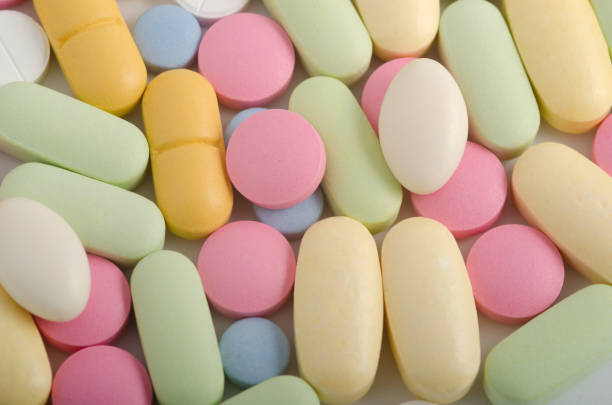Pilonidal disease occurs when an abscess or cyst develops near the tailbone in the cleft of the buttocks. This condition is high among young adults, and it can be very painful and uncomfortable. Although some cases may require medical intervention, pilonidal disease can be treated at home in several ways. This article aims to discuss some home remedies that can be used to treat pilonidal disease.
Home remedies to treat pilonidal disease
Warm Compresses
Pilonidal disease can be treated at home by applying warm compresses to the affected area. Inflammation, pain, and healing can all be reduced by doing this. Make a warm compress by cleaning towels in warm water, wringing it out, and placing it over the affected area 3-4 times daily for 10-15 minutes.
Epsom Salt Baths
The anti-inflammatory properties of Epsom salt can help relieve the pain and swelling associated with pilonidal disease. Epsom salt can be added to warm water and soaked for 10-15 minutes, 2-3 times a day. As a result, the pain will be relieved, and healing will occur.
Exercise regularly
Strengthening the natal cleft muscles can prevent Pilonidal disease from developing. Every day, do at least 30 minutes of moderate exercises, such as walking or swimming.
Use a donut pillow
In addition to relieving pressure on the affected area, donut pillows can promote healing. Sit on a donut pillow when driving or working for long periods.
Avoid sitting for long periods
Sitting in one position for too long can increase pressure on the affected area and worsen Pilonidal disease symptoms. Avoid sitting for long periods of time, try standing up or moving around every 30 minutes.
Keep the area clean and dry
Preventing the spread of bacteria and promoting healing requires keeping the affected area clean. Pat it dry with a clean towel after cleaning with warm water and mild soap. Rub the affected area gently to avoid irritating the skin and worsening the condition. Avoid harsh soaps and vigorous rubbing. The affected area should also be dressed in loose-fitting, breathable clothes to allow air to circulate.
Use essential oils
In addition to reducing pain and inflammation, essential oils such as lavender and eucalyptus can prevent pilonidal cyst infection. Apply a little bit of the essential oil to the affected area several times daily, diluted with carrier oils like jojoba or coconut oil.
Apply aloe vera gel
Aloe vera gel is a natural anti-inflammatory that can reduce inflammation and pain associated with pilonidal disease. Rinse the affected area with warm water after applying aloe vera gel and leaving it on for 15-20 minutes. This process should be repeated several times a day.
Use a sitz bath
Warm, shallow sitz baths soothe and clean the affected area. If you want to make your sitz bath, fill a bathtub with warm water, add Epsom salts or baking soda, and then fill it with a few inches of warm water. Soak in your sitz bath several times a day for 10-15 minutes to relieve pain and promote healing.
Take pain relievers
You should take-the-counter pain relievers, such as ibuprofen or acetaminophen, which can help to relieve the pain and discomfort associated with pilonidal disease. The package should contain instructions for use, and the recommended dosage should not be exceeded.
Change your diet
Reducing the risk of Pilonidal disease and promoting healing through dietary changes is possible. Eat a healthy, balanced diet that contains fruits, vegetables, and whole grains, while avoiding processed foods, sugar, and saturated fats. Toxins can be flushed out, and healing can be promoted by drinking plenty of water.
Take probiotics
Probiotics have two benefits boosting the immune system and preventing pilonidal cyst infection. You can take a probiotic supplement or eat foods rich in probiotics like yogurt and kefir.
Practice good hygiene
It is imperative to practice good hygiene to prevent bacteria from spreading and promote healing. Whenever you touch the affected area, wash your hands frequently. Share towels and other personal items sparingly.
Try acupuncture
To relieve pain and promote healing, acupuncture involves inserting fine needles into specific points in the body. Inflammation and pain associated with Pilonidal disease can be reduced with acupuncture.
Use castor oil
Castor oil is an antibacterial, anti-inflammatory oil used to treat pain, infections, and inflammation. You can apply this and leave it on overnight. Take a warm shower the following day to wash the oil off. Follow this process every night.
Seek medical treatment if pilonidal disease symptoms persist
Home remedies can be effective in mild cases of Pilonidal disease, but more severe cases may require medical attention or pilonidal sinus surgery. You should seek medical attention if your symptoms persist or worsen or if you develop a fever.
Various home remedies and lifestyle changes are effective in treating pilonidal disease. Nevertheless, you should seek medical attention if your symptoms persist or worsen. Before trying new home remedies or making significant changes to your diet or lifestyle, consult your healthcare provider.





